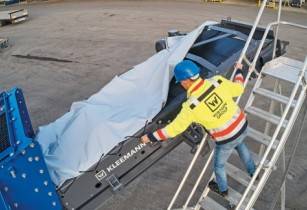The Bundesanstalt f?r Materialforschung und - pr?fung (BAM) is set to collaborate with its African colleagues to find a solution to the sustainable construction during the Hannover Messe event in Germany from 23-27 April 2018
BAM scientists are investigating to what extent vegetable substances could be used instead of chemical or mineral additives in concrete. The main focus of the research is on residues from agriculture.
Concrete production requires a lot of energy and produces large amounts of climate-damaging CO2 because cement clinker must be burned at very high temperatures and the chemical reaction is accompanied by high carbon emissions.
Cement clinker used as a binder in concrete is an essential component of cement. Therefore, the reduction of cement clinker is a starting point in the search for sustainable concrete. The research has also focused on which organic substances could replace clinker or use it more effectively and in such a way that important concrete properties like flow behaviour, strength or durability remain unaffected.
?We are experimenting with coconut fibres, acacia juice and cassava peel, among other things, and check the resilience of organic concrete compared to conventional mixtures,? explained Dr Wolfram Schmidt from BAM?s Technology of Construction Materials division.
Schmidt further added that the peel of Cassava, also called manioc and a staple food in Nigeria, is a suitable raw material for concrete in two respects. The residual starch adhering to the peel can be extracted and used as an additive to improve processing properties of concrete so that cement can be used more effectively.
When the peel is subsequently burned, the high reactive silica content enables the ash to be used as a sustainable cement substitute and improve the eco-balance compared to conventional concrete.
The use of cassava peel has another advantage. The combustion energy released in ash production can be used to manufacture bricks for example.
The construction industry is also looking for possible new, sustainable raw materials for concrete production here and in other countries as well. ?We will be able to transfer a lot to highly technical countries from our basic research and experience gained by working with our African partners,? said Schmidt.
This might also be useful for the Middle East?s construction industry, with large construction projects being underway in the region.
According to BAM, the sustainable use of agricultural residues in the construction industry would not only be a contribution to environmental protection but also a potential additional source of income for farmers.
































